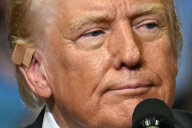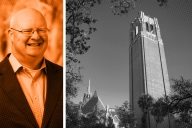You have /5 articles left.
Sign up for a free account or log in.
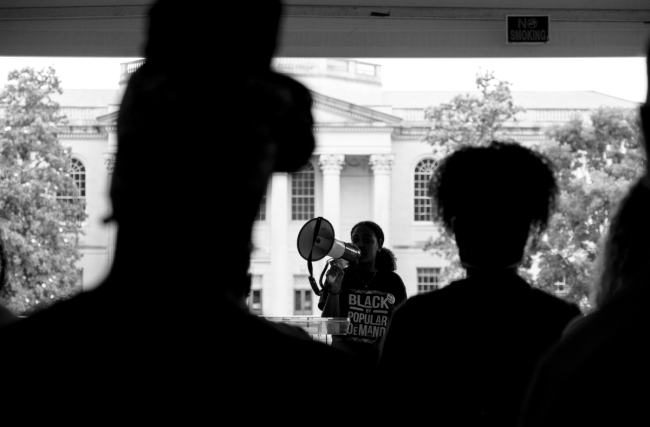
Julia Clark, vice president of the Black Student Movement at UNC Chapel Hill, leads a protest last year against the Board of Trustees’ initial denial of tenure to Nikole Hannah-Jones.
Cornell Watson
The University of North Carolina at Chapel Hill is facing allegations of censorship by a visiting artist at the Sonja Haynes Stone Center for Black Culture and History.
The photographer, Cornell Watson, said that the Stone Center suddenly canceled his show this month, days ahead of its planned opening—even after he begrudgingly agreed to exclude images of the 2021 student protests over Carolina’s governing board denying tenure to journalist Nikole Hannah-Jones.
“The entire time since they started pushing back on images, I was like, ‘Is this a residency? Is this an artist’s residency? Or this this commissioned work?’” Watson said in an interview. “Because I do commercial work, too, and that’s a whole different approach.”
Watson said the Stone Center also objected to his first image for the series, a composite photo of a figure holding a noose on top of the campus’s Unsung Founders Memorial, designed to show how close Carolina’s Silent Sam Confederate monument had been located to the counterpoint founders’ memorial. Silent Sam, whose existence on campus angered many students for years, was toppled in 2018.
Unlike with the Hannah-Jones photos, however, the Stone Center eventually agreed to include this image in the exhibition.
The show was to be called “Tarred Healing: Sites/Sights of Remembrance,” a play on the Carolina Tar Heels.
Variations on a Theme
Joseph Jordan, director of the Stone Center, in a news conference Friday said he and Watson disagreed creatively over the first image and that he did not want the Hannah-Jones protest photos in the exhibition at all because they didn’t fit the “theme.”
“We brought Cornell here to campus with us,” Jordan said of Watson. “We personally took him and introduced him to folks in Chapel Hill. We personally took him to sites here on campus and noted to him that these were the sites that we wanted to magnify because they had never really been given the attention that we felt that they needed.”
“Tarred Healing” at Carolina was to include 10 photos, such as the one below featuring Dolores Clark and her family, whose ancestors (Clark’s great-grandparents) Toney and Nellie Strayhorn were born into slavery and became freed landowners whose historic house still stands near campus. The Strayhorns were buried on the Black side of the Old Chapel Hill Cemetery, and an image of their grave was planned for the exhibit, as well.
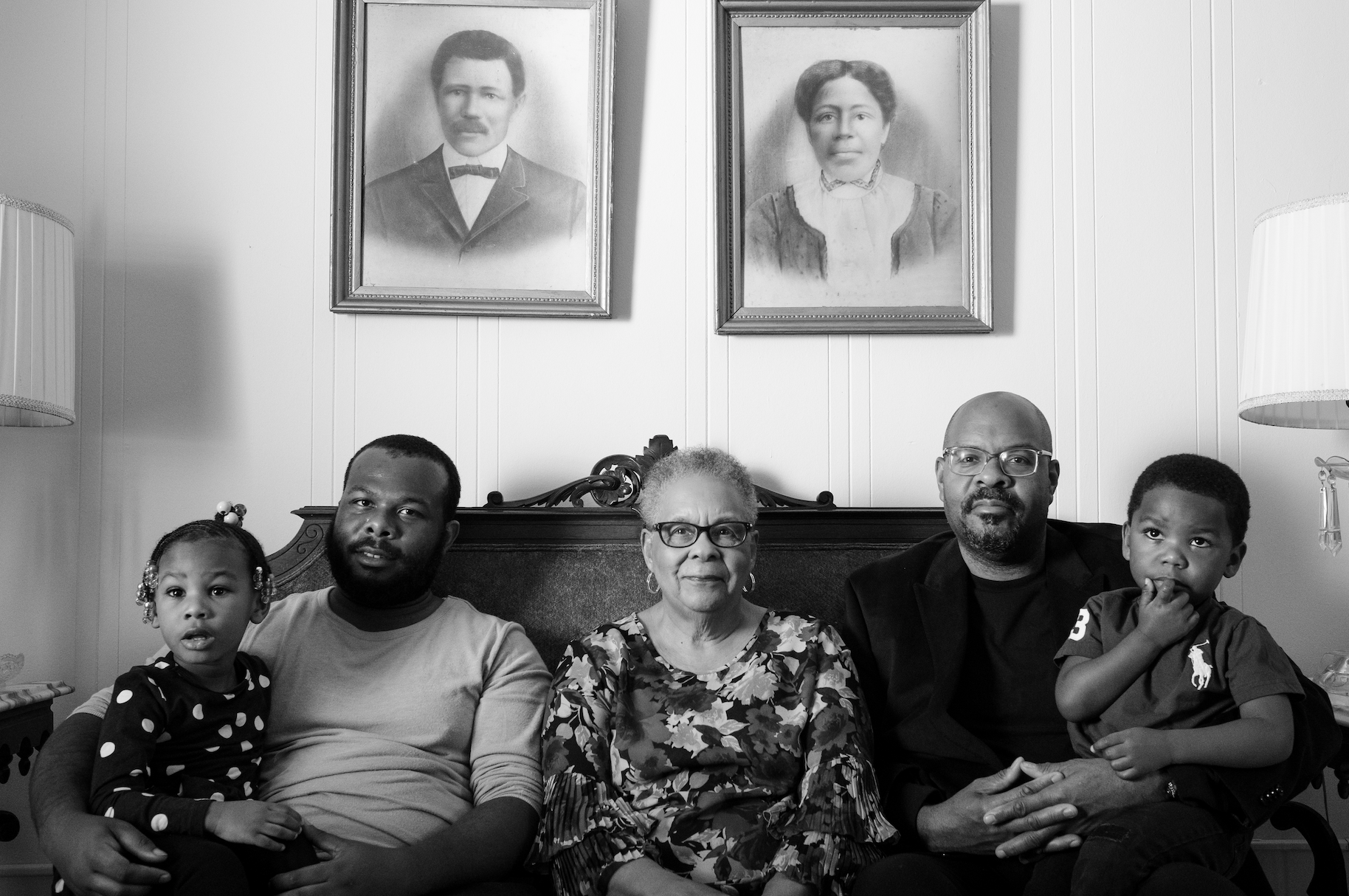
Jordan said that these kinds of photos seemed as if they belonged to a different show from the Hannah-Jones protest photos, including one of a “board member alone, looking back at a camera.”
This was presumably in reference to Watson’s Hannah-Jones protest photo of Clayton Somers, vice chancellor for public affairs and secretary of the university. Watson’s caption says that Somers “stares as Black students lead a demonstration during the Board of Trustees meeting to make a tenure decision for Nikole Hannah-Jones.”
Watson’s caption also says that Black students led a similar demonstration in 1979, after a qualified Black professor, Sonja Haynes Stone—for whom the Stone Center was named—was denied tenure.
What the caption doesn’t say is that Somers helped negotiate a controversial $2.5 million deal with the North Carolina Sons of Confederate Veterans to care for the Silent Sam statue; Watson said it may have been too heavy-handed to include that detail, but it’s evidence that the recent student protests are part of the same long story as the other photos, not a different one.
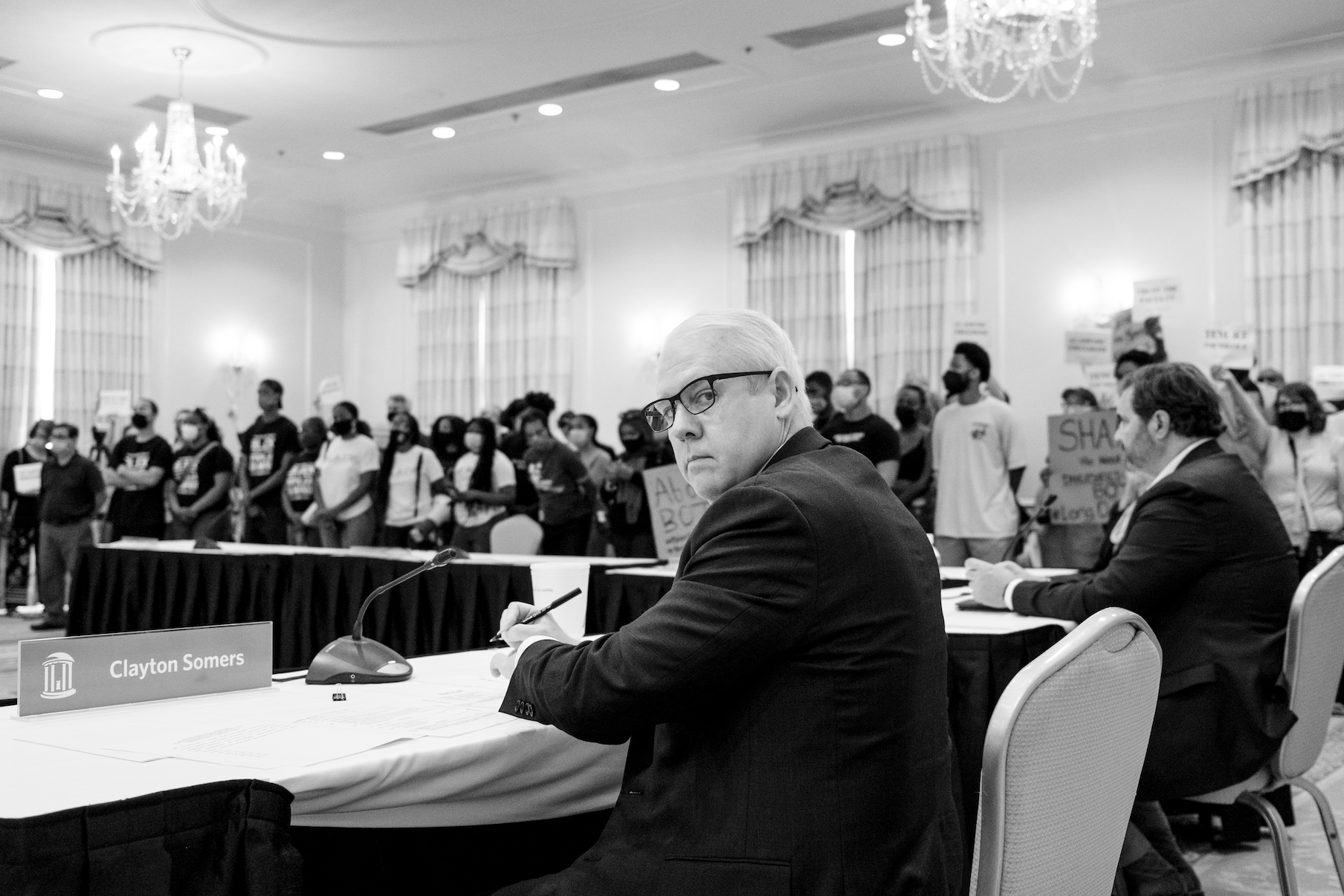
‘The Integrity of What We Are Doing’
Jordan also said he objected to Watson sharing some of the work he created during his $5,000 Stone Center residency—including three Hannah-Jones protest photos—with The Washington Post this month, ahead of the opening of the now-canceled campus exhibition.
“We had no idea about it,” Jordan said of Watson’s Washington Post photo essay, which did not mention any disagreement between Watson and the Stone Center about the photos. “We told him that we wanted to coordinate public information so that people would focus on our exhibition.”
“We want the integrity of what we were doing,” Jordan said. “But I think it was exacerbated by the fact that those [Hannah-Jones protest] photos appeared there. I can’t tell you how much those photographs veer away from the entire conversation that we had.”
Watson said that he was surprised by the center’s reaction to his reaching out to the Post, in part because he saw the photo essay as generating interest in the campus exhibition (Watson said there had been very little marketing on the center’s part). Guessing that he would have reached out to the Post even if Jordan had approved the protest photos, Watson said that Jordan reached out to him in the first place after seeing work he previously published in the Post—a photo essay in honor of his Black ancestors called “Behind the Mask.”
Watson also underscored the lack of any written agreement with the center about photo copyright or show exclusivity, meaning that the photos were legally his to share. Jordan argued Watson had breached “etiquette” and said the center may change the way it drafts agreements with artists in residence going forward.
‘Spaces of Memory’
The Stone Center formally offered Watson his residency last year, amid campus protests over the campus governing board’s refusal to consider a tenured faculty contract for Pulitzer Prize winner and “1619 Project” creator Hannah-Jones, who is Black. (The board later voted 9 to 4 to grant Hannah-Jones tenure, but she took a job at Howard University instead.)
Watson’s offer letter from Jordan, dated June 4, cites Watson’s earlier Washington Post work and says, “We would like for you to use your talents as a documentary photographer and creative artist to organize an exhibition that focuses on ‘spaces of memory’ around the lives of UNC’s Black community(ies). This university has been engaged in an extraordinary process of self-examination where its past has been examined and re-interpreted with a new and more critical lens. Although the university’s archives have been mined for new information about the history of the Black presence on campus there are still likely many nuanced elements of the story that have been missed.”
Jordan’s letter continues, “We are excited about your collaboration with us on this project with us because we feel there is ample space for a different kind of photographic exploration. Your work is as much an artistic practice as it is a documentary practice and all of your work demands the full attention of the viewer.”
The only concrete term of the agreement is a $5,000 stipend (the letter mentions a tentative September opening, but this was delayed several times, for various reasons including COVID-19, until February).
Watson said his reading of the letter is that it included no specific requirements about imagery and that it only made sense to him to include Carolina’s active Black student movement—whose concerns, he learned during the protests, extended beyond the Hannah-Jones tenure issue—in a project documenting (in the center’s words) UNC’s “Black community(ies).”
Feeling ‘Gaslit’
Watson said the center’s ongoing objections to the direction of his work troubled him so much that he consulted with his local arts council on creative freedom in artist residencies.
“I was like, ‘Is this normal?’” Watson recalled. “And they said, ‘Absolutely not.’”
Watson said he continues to feel “gaslit” by the Stone Center’s messaging about the conflict, including a statement that repeatedly mentions racial “reckoning”—a phrase that’s been used countless times to describe the post–George Floyd era.
The same statement also asserts that Watson’s protest photos ran counter to the “atmosphere of reverence and the sacred that we wanted to create for the families and individuals pictured in the show.” Yet Watson said he showed his work to some of those families and individuals ahead of the exhibition, and they approved.
“I talked to them after the show was canceled,” as well, Watson added. “And yes, there is this disappointment this exhibition was canceled for the reasons that it was canceled.”
Canceled at Carolina, that is. Watson said that since the Stone Center backed out, he’s gotten multiple offers to host the show at other venues off campus.
Carolina referred questions about the matter to the Stone Center. Asked if anyone else at the university was involved in decisions about the exhibition, Jordan said, “This is not a UNC Chapel Hill decision. This is a Stone Center decision. Nobody at the university level—I would almost argue that this is not something that they knew very much about.”
The university also faced questions last week as to why its alumni magazine allegedly killed a story on academic freedom on campus. Eric Muller, Dan K. Moore Distinguished Professor in Jurisprudence and Ethics and a critic of the university’s handling of the Silent Sam deal and the Hannah-Jones case, on social media said that he’d learned from a journalist who’d interviewed him that the story was not going forward, for reasons that weren’t entirely clear.
The freelance journalist, Barry Yeoman, confirmed Muller’s account, saying he’d been told to put the story on hold before being told not to move forward with the story at all. Yeoman said that this kind of thing can happen with magazine work, especially when there’s a change in editorial teams, as there recently was at Carolina Alumni Review due to retirements. He also said he’s never before questioned the Review’s journalistic integrity, and he had high expectations for its new editor, journalist Allan Holmes.
Holmes said that the Review operates independently of the university and that it never “spiked” a story on academic freedom. “Everything is on the table,” he added.
Yeoman said he did understand how Muller—whose reappointment to the UNC Press’s Board of Governors was denied last year by the university system’s Board of Governors—found the decision about the academic freedom story troublesome.
“He’s been through a lot, and I understand why he and others might look at this moment through the worst possible lens,” Yeoman said.
Muller said that the magazine “commissioned the piece from the freelancer, not the other way around. The freelancer reached out to me, not the other way around. The freelancer was also gathering information on other academic freedom–related stories at UNC. The magazine paid the freelancer even though the freelancer never actually wrote the story.”
Jeremy Young, senior manager of free expression and education at PEN America, said, “If both of these stories are true, they suggest a troubling climate of censorship on the UNC campus around recent controversies involving racism and racial discrimination, particularly the poor treatment of Nikole Hannah-Jones. UNC faculty members and artists in residence should be free to voice their views about the Hannah-Jones controversy without restrictions on their free expression. In both cases, the alleged conduct of the university violates the principle of academic freedom.”
The alleged removal of Watson’s protest photographs “inappropriately censors the free expression of Black students on campus,” as well, Young said. He called it a “cruel irony” that an exhibition at a center named for another Black woman professor denied tenure at Carolina would reject photographs of students protesting a similar decision decades later.
“Unfortunately,” Young said, “the university seems to be compounding the mistakes it made in the Hannah-Jones tenure case, punishing and censoring free expression and academic freedom.”








